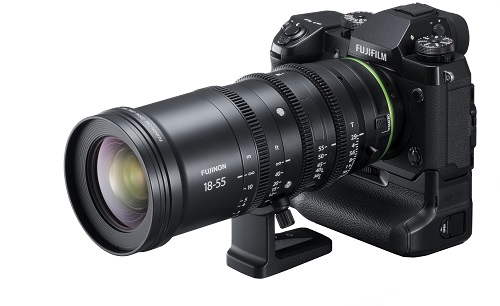

The smaller the number, the ‘faster’ the lens is, allowing you to take images at high shutter speeds in lower light. The maximum aperture of the lens determines how wide it can open. In this image of Natasha, I was using the Fujinon 56mm f1.2 lens at f1.6. In low light, I often find myself shooting at, or close to, the maximum aperture of the lens (the smallest number). For me, this rules out some options such as the Fujinon XF 90mm F2 R LM WR lens. What’s the practical working distance of your lens? Ideally, for urban portraits, it’s good to have a lens choice that flatters your client for portraits, but without you being too far away. How flattering is this focal length for portrait photography? The images should flatter your client or model and make them look amazing. When choosing a lens for a shoot, I consider the following things: Focal length Portrait shooters have many fast primes available to them, as well as weather-resistant primes and a fantastic range of zoom lenses. Fujifilm regularly updates a lens road map to let photographers know what new additions are coming. The Fujifilm X-Series boasts a stunning range of superb lenses, with more being added every year. This image of Bailey was taken with a Fujinon 23mm f1.4 lens. The last thing you want on your mind during a shoot is the feeling of dread that you just let a whole lot of dust bunnies inside your camera.Ĭhoosing a lens for an urban portrait shoot is a balancing act between a focal length that flatters your subject, but still allows you to be close. If you only have one camera body, that is workable – you just need to be careful if you plan on changing lenses in urban environments to minimize the possibility of dust ending up on your sensor. I’ve even shot urban portraits with the X100 line of fixed-lens compact cameras. You can pretty much substitute any of the excellent X-Series lineups into your urban portrait kit, from the X-T series I use to the X-Pro line and the X-E line. I prefer to take two camera bodies with me on my shoots: the Fujifilm X-T3 and X-T2. You can, of course, shoot in RAW alongside JPG and add your own looks or presets in post-production. The images in this article are JPGs (Provia simulation) with only small edits made in Adobe Lightroom. Fujifilm has used their decades of knowledge to produce JPG simulations that bear the names of class film emulsions: Provia, Astia, and Velvia, to name three. Certainly not an arguable point.Using live view on my Fujifilm X-T3, I could see exactly what adding extra exposure compensation would do when photographing Anne.Īnother big advantage of Fujifilm cameras is their stunning color rendition – the best of any digital camera manufacturer. That said, if bokeh and thin DOF is your primary goal, no question that FF has an advantage. However, barring a direct comparison with similar shots taken with a crop camera and a fast lens, such as the 56/1.2, your contention remains unproven. Again, the lens costs only 150 Canadian, brand new. All of the images bellow can be easily found on-line in various reviews/tests of the lens. I am a bit into film photography as well. I actually own one and I am using it with my film Cannons. All shots/crops bellow were taken using the Cannon 50 mm 1.8 STM lens which costs approximately 150 Canadian dollars. Or, you should be prepared to prove your contention here if you were in the least bit serious (and if you weren’t. Oh, and BTW, this is ridiculous enough to be classifiable as trolling IMHO, so tread carefully. I’m sure we’ll all waiting with bated breath to see your examples and be proven wrong. Otherwise, it’s a completely unsubstantiated (and very likely untrue) statement. If you’re going to make fairly outrageous statements like this, then I’d strongly suggest following the advice you’ve already gotten from others and provide a few supporting examples. Gosh, I read this on the Internet, so it’s gotta be true, right? Please. Maybe some examples supporting your position of the $150 plastic lens with a FF body will always be better than Fuji’s bokeh output. I would tend to believe that Ben’s use of Fuji for his very high end fashion photography would fit Fuji if your opinion were true. Is that your opinion? Because it isn’t a fact, I think. A 150 dollar plastic fantastic with a ff camera will produce better bokeh than anything else any cropped camera manufacture has to offer at premium prices. If bokeh is your thing than cropped sensor cameras are not. The only lens that I admire the bokeh in the Fuji line up is the 90f2.



The bokeh isn’t as creamy as what I used to. I must admit that I miss the bokeh in the Fuji system. I have been shooting with Fuji ever since XT2 was out and came from Nikon world.


 0 kommentar(er)
0 kommentar(er)
